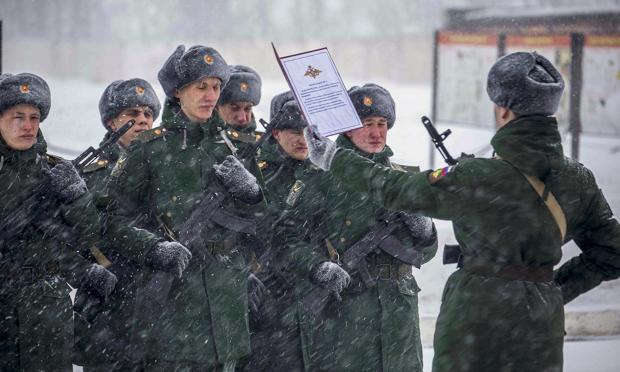In December 2022, the Russian Ministry of Defense announced its ambitious plan to increase the size of the Russian Armed Forces to 1.5 million personnel by the end of 2026. For this, the number of contract soldiers in the Russian Armed Forces must increase significantly also: to 521,000 by the end of 2023 and 695,000 by the end of 2026, adjusted from the previous plan to increase this number from 405,000 in 2020 to 500,000 by 2027.
In addition, the recruitment system with age will also be adjusted, The recruitment range is changed from 18–27 years old (currently, Russian men are not recruited when they reach the age of 27) to 21–30 years old.
The only hypothetical way to bring about the planned increase would be a massive conscription campaign in Russia:from forcing young conscripts to sign two-year service contracts to expanding the network of military training centers within universities, among others. However, a more serious issue appears to be limiting the planned growth of the Russian Armed Forces—namely, Russia's growing demographic challenges.
As the Jamestown Foundation reports in a related study, according to the 2020–2021 population census of Russia, the number of men aged 18–26 in Russia was approximately 7.21 million in 2021. Using this census data, the number of men aged 18–26 year olds will decrease to 7.18 million in 2023 and then increase slightly to 7.22 million in 2026. Furthermore, those who will be between the ages of 18 and 26 in 2023 are the same people who will be 21–29 in 2026, when the new recruitment rules should apply.
However, in reality, these projected numbers should be lower as annual death rates are estimated at 1,700 to 1,900 for those aged 10-14 (here and further, death rates include both males and females, but the share of boys always exceeds 50%), 4,000–4,200 for 15–19 year olds and 6,500–8,000 for 20–24 year olds.
For comparison, according to the 2010 census, about 10.6 million men aged 18 to 26 lived in Russia, and about 12 million men of the same age group, according to the 2022 population census. Taking into account the planned increase in the conscription age , fewer than 7.16 million men aged 21 to 29 will be present in Russia in 2030.
In short, the number of young men in Russia is inevitably declining. In previous decades, the Russian military leadership tried to take into account the long-term consequences of this process. For example, the seasonal draft in 2002 numbered approximately 160,000–170,000 soldiers, and the spring draft six years later numbered 133,000 soldiers. Then the term was two years.
However, in 2008, when military service was reduced from two years to one, the Russian Ministry of Defense tried to increase the number of conscripts. Thus, the 2008 fall draft recruited 219,000 soldiers, the 2009 spring draft numbered 305,000 soldiers, and, during the 2009 and 2010 seasonal recruitment campaigns, approximately 270,000–280,000 soldiers were drafted. Thus, as the demographic of young Russians within the country began to decline, the total number of conscripted soldiers fell from 640,000–660,000 to 540,000–560,000 in the 2000s.
Then, from 2012 to 2022, the number of soldiers recruited during each recruitment campaign dropped from 200,000 in the spring of 2011 to 130,000–140,000 on average. Meanwhile, the number of contract soldiers (including sergeants and noncommissioned officers) increased from 150,000 in 2010 to 405,000 in 2020—although during these years the number of enlisted soldiers and the number of contract soldiers represented overlapping totals. This means that the total number of soldiers, conscripts and conscripts, has fallen from nearly 700,000 in 2010 to between 560,000 and 600,000 in the early 2020s.
In addition, it should be mentioned here that the total labor force in Russia, consisting of those people who should be feeding the armed forces, also decreased from 93.1 million in 2010 to 89.1 million in 2020. And the number of employed decreased from 71.5 million in 2010 to 69.5 million in 2020 (Rosstat.gov.ru, accessed February 16).
Consequently, the planned increase in personnel in the Russian Armed Forces seems impossible in the current demographic, economic and even political conditions. The cap of 695,000 contract soldiers by 2027 means that one in ten Russians between the ages of 21 and 30 could be called up for active duty at any time. In fact, this increase would only be possible if Russia were a truly democratic federation facing an existential external threat.
Another option would be if Russia recruited young women alongside men, and those women signed formal service contracts — although, given domestic demographic problems, that option seems even more unlikely in Russia.
As a result, the Russian Ministry of Defense may believe it can fill the gap by recruiting young Central Asian immigrants in exchange for Russian citizenship, which adds another dimension to Russia's growing desperation in the face of declining demographics at home and human resource shortages in Ukraine.



